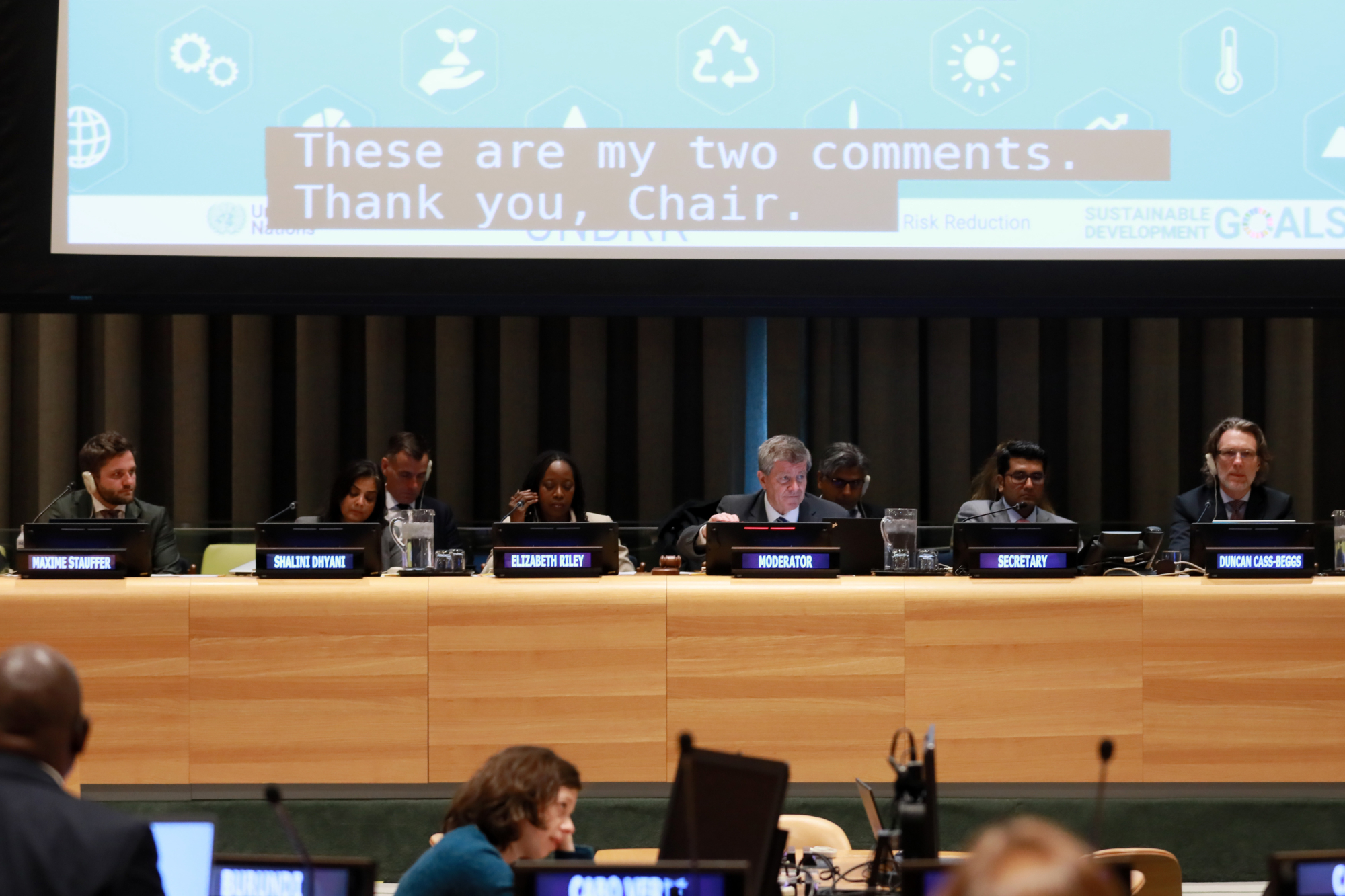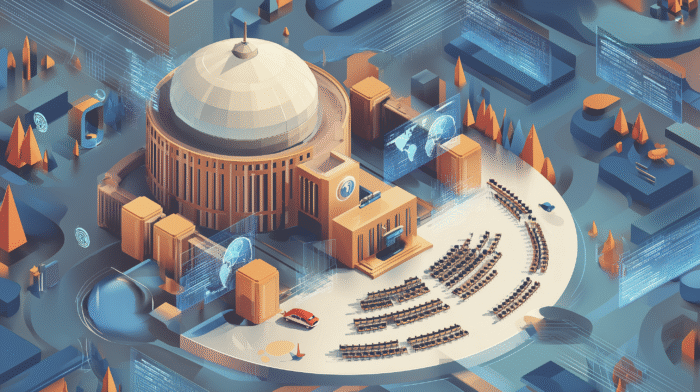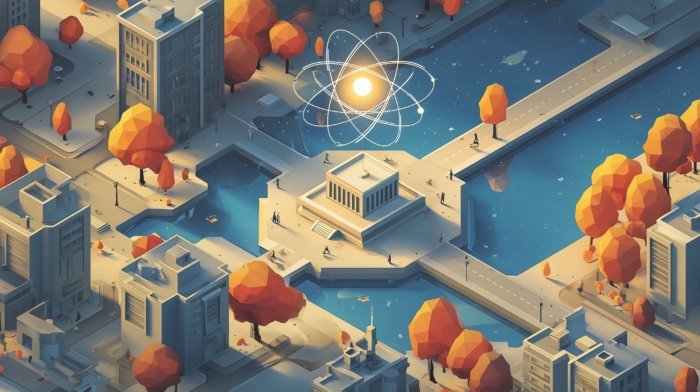
SI at the UN High-Level Meeting on Disaster Risk Reduction
-
Event
-
AI Governance
-
Risk Goverance
-
Multilateralism
On May 19, 2023, SI was invited alongside UN partners, member states and other key stakeholders to contribute to a UN High-Level Meeting on Disaster Risk Reduction to reflect on the Midterm Review of the Sendai Framework.
The Sendai Framework for Disaster Risk Reduction (2015-2030) was adopted in March 2015 by over 2,800 government representatives in Sendai, Japan, and remains one of the sole multilateral instruments dedicated to coordinating disaster risk reduction on an international scale.
While historically its community has focused on natural hazards, the Framework’s review period in 2022 and early 2023 gave rise to new perspectives on disaster risk – particularly the need to focus on risks from emerging technologies, such as artificial intelligence (AI) and biotechnology.
During the High-Level Meeting, Maxime Stauffer, co-CEO of the Simon Institute for Longterm Governance (SI), emphasized the significance of multilateral coordination in tackling technological risks and underscored the necessity for inclusive technology governance:
“How can the current multilateral architecture reduce threats from technological developments? The good news is that we don’t necessarily need new knowledge, new foresight, or new processes to start making progress. And today, I want to put forward five propositions.
First, we need a greater focus on technological risks. These risks are traditionally neglected in the multilateral system. One reason for this is that their origins are very local, and often based in the global north. But all countries are at risk of being exposed. The SDG mid-point summit this September provides an avenue to make the case that development drives the creation of risk, and that while AI can boost the SDGs; we also need to account for the risks.
Second, we need improved coordination. The consequences of technological risk are multisectoral – meaning all sectors will be exposed and affected by AI. Technological risks are already part of the Sendai Framework, but are not tackled by the disaster risk reduction community. We conducted a text analysis of all the national reports submitted to the Midterm review – and almost none of them mention technological risk. So we don’t necessarily need a new framework, or process – we just need to do better at implementing the existing one.
Third, we need more prevention. Historically, disaster response, while extremely costly, generally works. But today, and in the future, prevention will be increasingly crucial, due to the severity of technological risks. However prevention is much easier said than done. Worldwide research shows that democracies, autocracies, and international organizations only change their budgets in response to disasters. Therefore, if you want to start doing prevention, this means we need to transform institutions, and adopt fundamentally new ideas on how we govern risk. The Our Common Agenda report, the Future’s Lab, and the Summit for the Future, all provide avenues to think about such questions.
Fourth we need to involve the private sector. With technological development, most risks originate from private sector activity. We need better models to keep member state, private sector, and civil society actors well-coordinated. The International Labor Organization pioneered one of these models, but we need others. To do so, we can leverage technical international organizations in the multilateral system, like the International Standardization Organization, or the International Atomic Energy Agency.
Fifth, and most importantly, we need extremely strong inclusion. Discussions about tech development cannot only happen in the Global North. As tech developments amplify inequalities, inequalities also amplify risks. Reducing AI risk therefore, needs to go hand in hand with reducing the Global Digital Divide. And one path to that is via Global Digital Compact. The African Union’s consultation on the Global Digital Compact already spotlights the need to highlight both the benefits and risks of artificial intelligence. Another path is via the SIDS conference — SIDS countries need access to technology; but are also extremely exposed to the risks.
In summary, the challenge we face is to address these new risks from development that human activity creates, and especially technological risks. But to be clear, we are extremely far behind. And technology is only developing faster. This will not take foresight or new processes. We will not reinvent the wheel. It will only take political will.”
Photo credit: SI Co-CEO Maxime Stauffer during Panel 3 of the High-Level Meeting on Strategic Foresight and Risk Reduction, New York, May 19, 2023. UNDRR (CC BY-NC-ND 2.0)



